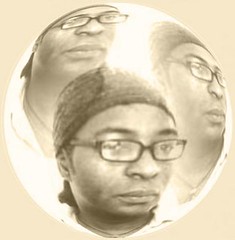Thursday, April 30, 2009
Monday, April 27, 2009
See what we saw the visual on Mary Ellen Mark.
See what we saw, the visual and performing on Mary Ellen mark ........
Done and dusted or here to stay?
Done and dusted or here to stay?
The one relevant question in her documentary photographs depicting people in situations is they are the situations because that’s what she wanted to do for the subjects playing the role than if they had to be themselves.
Emmee began photographing with a box brownie before turning professional as a freelance in 1960’s. After graduating with a masters in 1964, Mary Ellen Mark was awarded a Fulbright scholarship to photograph in Europe for a year.
Mary Ellen Mark’s photography has addressed difficult social issues including homelessness, drug addiction and prostitution; she recognized the relationship between statement and the real world. She works primarily in black and white and her contribution to publications has included Life Magazine, Rolling Stone, The New Yorker and Vanity Fair.
Why did you choose to do photography?
It wasn’t a choice; it was just what I wanted to do. When I became interested in photography, which was in 1963, I didn’t think “should I do still-life photography? Should I be a landscape photographer? Or should I do commercial work?” I knew that I wanted to photograph people and wanted to do documentary essays on social situations.
Mary Ellen Mark has created a niche market for a critical eye and has rolled out quality material in her narratives which I like, and closer inspection of her work resemble burning embers of cinematic influence by chance in my work. These qualities have enlightened my focus on furthering my studies recording information and communicating expression across boundaries, therefore, enthusiasm has coupled the lack of time and led me to explore in a controlled environment working on group projects collaborating and exchanging ideas.
Rhetoric Documentary Influences by the early works of her medium, Mary Ellen Mark’s most recent works feature a range of high-profile film industry professionals including unguarded moments of life behind the scenes.
Here lies the problem, Mary Ellen Mark is one of the most famous documentary photographers of her generation. To the most famous film sets in history through a lens or to anyone who ever wondered what goes on behind the scenes. Her visual language go beyond records of newsworthy events and people, she is usually described as a photojournalist or documentary photographer but neither term describes the kind of pictures she makes. Her images are rooted in reality behind the social issues and many of them record the human faces particularly those separated from us by barriers of class or nationality. Her best pictures have a dream like quality offering rich symbolic narratives about human strengths.
Some critics viewing it as a way of recording reality that is self-evident and unmediated, and others arguing that reality itself is a social construct, the statement that exists between their pictures and the real world. We see what we saw in my work. Mary Ellen Marks documentary photographs contradict assumption to reasoning and suggest translation of producing a picture of reality into a meaning ....
Charles Fuller 27-04-2009 12:00pm
Emmee began photographing with a box brownie before turning professional as a freelance in 1960’s. After graduating with a masters in 1964, Mary Ellen Mark was awarded a Fulbright scholarship to photograph in Europe for a year.
Mary Ellen Mark’s photography has addressed difficult social issues including homelessness, drug addiction and prostitution; she recognized the relationship between statement and the real world. She works primarily in black and white and her contribution to publications has included Life Magazine, Rolling Stone, The New Yorker and Vanity Fair.
Why did you choose to do photography?
It wasn’t a choice; it was just what I wanted to do. When I became interested in photography, which was in 1963, I didn’t think “should I do still-life photography? Should I be a landscape photographer? Or should I do commercial work?” I knew that I wanted to photograph people and wanted to do documentary essays on social situations.
Mary Ellen Mark has created a niche market for a critical eye and has rolled out quality material in her narratives which I like, and closer inspection of her work resemble burning embers of cinematic influence by chance in my work. These qualities have enlightened my focus on furthering my studies recording information and communicating expression across boundaries, therefore, enthusiasm has coupled the lack of time and led me to explore in a controlled environment working on group projects collaborating and exchanging ideas.
Rhetoric Documentary Influences by the early works of her medium, Mary Ellen Mark’s most recent works feature a range of high-profile film industry professionals including unguarded moments of life behind the scenes.
Here lies the problem, Mary Ellen Mark is one of the most famous documentary photographers of her generation. To the most famous film sets in history through a lens or to anyone who ever wondered what goes on behind the scenes. Her visual language go beyond records of newsworthy events and people, she is usually described as a photojournalist or documentary photographer but neither term describes the kind of pictures she makes. Her images are rooted in reality behind the social issues and many of them record the human faces particularly those separated from us by barriers of class or nationality. Her best pictures have a dream like quality offering rich symbolic narratives about human strengths.
Some critics viewing it as a way of recording reality that is self-evident and unmediated, and others arguing that reality itself is a social construct, the statement that exists between their pictures and the real world. We see what we saw in my work. Mary Ellen Marks documentary photographs contradict assumption to reasoning and suggest translation of producing a picture of reality into a meaning ....
Charles Fuller 27-04-2009 12:00pm



